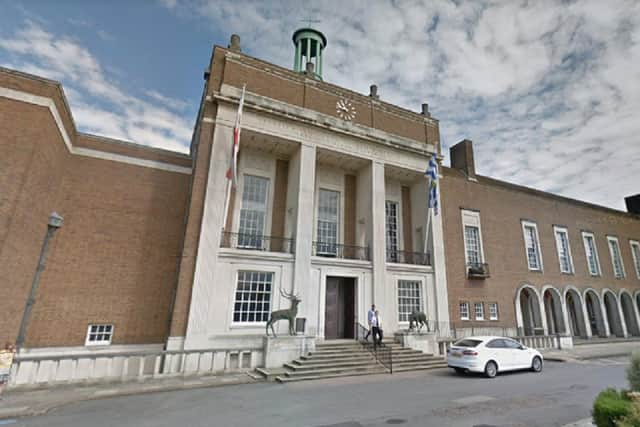Hertfordshire County Council's Covid-19 costs estimated to be £9m higher
and live on Freeview channel 276
According to new estimates, submitted to the government on Friday (June 19), the cost of the council’s response to Covid-19 will have reached £73.1m by the end of September.
That’s £9million higher than previous estimate of £64m, which was reported to members of the council’s cabinet last week.
Advertisement
Hide AdAdvertisement
Hide AdAnd it’s now £25 million more than the £47.9m that’s been allocated to the council by central government to cover the additional costs related to Covid-19.


But it does not include Covid-related costs associated with major engineering projects – such as the A120 and A602 – which have been estimated at a further £11m.
Nor does it take into account the predicted five per cent drop in council tax revenue this year. And that could generate a funding gap for the county council of an additional £30m.
Cllr Ralph Sangster, the county council’s executive member for resources and performance, had already warned that without additional funding from the government the county council may need to consider ‘extensive’ cuts to services next year.
Advertisement
Hide AdAdvertisement
Hide AdAnd speaking to the Local Democracy Reporting Service he says government funding will need to address the mounting costs to the council AND the loss of income from business rates and council tax.
But he stresses that the council’s ‘strong’ financial position means there is no immediate threat to the county council.
Nevertheless he says staff at the council are already looking to identify cost savings that could be made next year, if required.
And he stresses that the county council needs to know the extent of any deficit before the end of the summer, so work on the budget can begin.
Advertisement
Hide AdAdvertisement
Hide AdBut he says he is cautiously optimistic that the government will find additional funding, while waiting to see what the government does next.
Since the outbreak of coronavirus, Hertfordshire County Council – which has responsibility for public health and social care – has played a leading role in the local response to the pandemic.
It has spear-headed the county’s response to support those who are self-isolating or who are medically vulnerable – with parcels of food, toiletries, cleaning materials and pet food.
It has sourced and funded PPE to care homes, as well as providing sickness cover for their staff and funding a care provider hotline.
Advertisement
Hide AdAdvertisement
Hide AdIt has recommissioned two care homes to increase capacity and ensure patients could be discharged from hospital, as soon as they are medically able.
And – among other actions – it has made changes to waste sites to make them Covid-19 compliant.
In addition to the additional costs, income that’s usually generated from council services – such as libraries, Herts for Learning, home care and the music service – has been lost too.
The latest £9m increase in the estimated cost of the council’s response to Covid-19 is said to reflect the council’s commitment to continue to support adult social care providers until the end of September.
Advertisement
Hide AdAdvertisement
Hide AdAnd it also reflects revised estimates for ‘home to school’ transport for pupils with special educational needs, who are no longer able to share taxis because of the need for social distancing.
Meanwhile a report by the County Council’s Network (CCN), which is chaired by Hertfordshire County Council leader Cllr David Williams, shows that the financial impact on councils is being felt nationwide.
A CCN study of 39 county and unitary councils suggests they could use up all available reserves in 2021/22 to cover an overall funding shortfall of £2.5bn.
It suggests that the financial impact on councils could run over several years. And it suggests county councils could be particularly vulnerable to the financial impacts of a second wave of coronavirus.
Message from the editor:
Advertisement
Hide AdAdvertisement
Hide AdThank you for reading this story on our website. While I have your attention, I also have an important request to make of you.
In order for us to continue to provide trusted local news on this free-to-read site, I am asking you to also please purchase a copy of our newspaper.
Our journalists are highly trained and our content is independently regulated by IPSO to some of the highest standards in the world.
The dramatic events of 2020 are having a major impact on many of our local valued advertisers and consequently the advertising that we receive. We are now more reliant than ever on you helping us to provide you with news by buying a copy of our newspaper.
Thank you